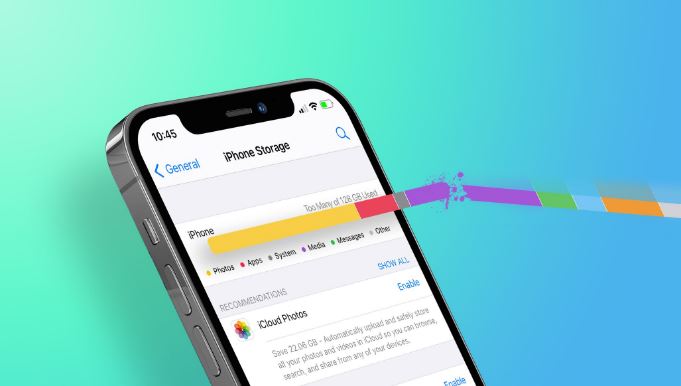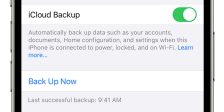
Introduction to iOS 15 and its new features
Welcome to the exciting world of iOS 15! With its sleek interface and new features, Apple’s latest operating system update has taken iPhone users by storm. Among the standout additions is the Optimized iPhone Storage feature – a game-changer for those constantly battling with limited storage space on their devices.
Suppose you’re tired of seeing that dreaded “Storage Full” message pop up at the most inconvenient times or find yourself regularly deleting precious photos and apps to make room for new ones. In that case, this feature will revolutionize your iPhone experience. Say goodbye to storage woes, and let’s dive into the secrets behind iOS 14’s Optimized iPhone Storage feature, unlocking a world where space constraints become a thing of the past! So grab your iPhones because we’re about to embark on an exploration that will change how you manage storage forever.
Understanding the Optimized iPhone Storage feature
One of the standout features of iOS 14 is its Optimized iPhone Storage feature, designed to help you manage storage space more efficiently on your device. But what exactly does it do, and how does it work?
At its core, this feature automatically removes files that are not frequently used from your device, such as photos and videos. Instead of taking up valuable storage space on your iPhone, these files are stored in iCloud and can be accessed whenever needed.
But here’s the genius part: even though the files are stored in iCloud, they still appear seamlessly on your device. So you don’t have to worry about losing access to critical memories or moments captured through photos or videos.
Go to Settings > Photos > Optimize iPhone Storage to enable this feature. Once enabled, your device will automatically manage storage by offloading less-used files to iCloud while keeping recent ones readily available.
Not only does this free up precious space on your iPhone, but it also ensures that you always have quick access to the content you need most. It’s a win-win situation!
So, if you constantly run out of storage space on your beloved iPhone, try the Optimized iPhone Storage feature. You’ll be amazed at how much easier it is to manage storage and access essential media files.
Stay tuned for more tips and tricks on optimizing storage and getting the most out of iOS 14!
How does it work?
The Optimized iPhone Storage feature in iOS 14 is a game-changer when managing your iPhone storage. But how exactly does it work? Let’s delve into the details.
First and foremost, this feature automatically offloads unused apps from your device while keeping their icons on the home screen. This means that when you tap on an offloaded app, it will be downloaded from the App Store again, but all of your data for that app will remain intact.
But what about your device’s precious photos and videos taking up valuable space? Well, iOS 14 has got you covered there too. The optimized storage feature intelligently stores high-resolution versions of your media in iCloud while keeping lightweight versions on your iPhone. When you want to view a photo or video, it seamlessly downloads the full-resolution version onto your device.
This intelligent system ensures you always have access to your content without sacrificing storage capacity. Optimized iPhone storage allows you to enjoy more space for important files, apps, and updates without worrying about losing data.
In addition to freeing up space on your device effortlessly, this feature also helps improve performance by reducing clutter and optimizing resources. Your iPhone will run smoother than ever before!
So whether you’re constantly running out of storage or just looking for a way to optimize performance on your device, give the Optimized iPhone Storage feature in iOS 14 a try. You’ll be amazed at how much easier life becomes when you don’t have to worry about managing every byte of storage yourself!
Benefits of using the Optimized iPhone Storage feature
One of the standout features of iOS 14 is the Optimized iPhone Storage feature, which offers a range of benefits for users. By intelligently managing your device’s storage, this feature ensures you never have to worry about running out of space again!
First and foremost, using the Optimized iPhone Storage feature allows you to keep all your essential files and documents on your device without sacrificing precious storage capacity. It automatically offloads unused apps from your phone while keeping their icons on the home screen so you can reinstall them with a tap when needed.
Not only does this free up valuable space on your device, but it also helps to optimize its performance by reducing clutter. With fewer unnecessary apps taking up memory, you’ll experience faster load times and smoother overall operation.
Another benefit is the optimized storage feature seamlessly works across all devices linked to your iCloud account. This means that if you delete an app or file from one device, it will also be removed from all other connected devices – no more wasting time deleting things multiple times!
Furthermore, using this feature can save you money in the long run by eliminating or delaying the need for additional storage upgrades. Due to limited space, you won’t have to constantly juggle which apps or files to keep; everything is managed efficiently behind the scenes.
Utilizing iOS 14’s Optimized iPhone Storage feature brings convenience, improved performance, and cost savings. Say goodbye to worrying about running out of space and hello to a seamless user experience!
Step-by-step guide on how to use the feature
1. Update to iOS 14: Before enjoying the Optimized iPhone Storage feature benefits, ensure your device runs on iOS 14 or later. You can head to Settings > General > Software Update and install any available updates.
2. Enable iCloud Photos: To utilize this storage-saving feature, you must enable iCloud Photos on your device. Go to Settings > [Your Name] > iCloud > Photos and toggle on the “iCloud Photos” option.
3. Choose to Optimize iPhone Storage: Once iCloud Photos is enabled, navigate back to Settings > [Your Name] > iCloud > Manage Storage > Photos and tap on “Optimize iPhone Storage.” This will allow your device to automatically store high-resolution photos and videos in iCloud while keeping optimized versions locally.
4. Monitor storage usage: Go to Settings > General > iPhone Storage to track your storage space. Here, you can see a breakdown of what apps use valuable space and manage them accordingly.
5. Clear out unnecessary files: If your device’s storage still fills up despite enabling the Optimized iPhone Storage feature, consider deleting unused apps or clearing out old messages and attachments.
Remember, by following these simple steps, you can optimize your iPhone’s storage capacity without compromising precious memories or app functionality!
Tips for optimizing storage on your iPhone
Managing storage on your iPhone is essential to ensure smooth performance and keep your device running efficiently. Here are some handy tips to help you optimize storage and make the most of your iPhone’s available space.
1. Offload Unused Apps: Go through your apps and identify those you rarely use. iOS 14 allows you to offload these apps, which removes them from your device but keeps their data intact. You can easily reinstall them when needed, freeing up valuable storage space.
2. Clear Temporary Files: Over time, temporary files can accumulate on your iPhone, taking up unnecessary space. To remove these files, go to Settings > General > iPhone Storage and tap “Offload Unused Apps.” This will automatically clear out any temporary files associated with unused apps.
3. Use iCloud Photo Library: Enable iCloud Photo Library to store photos in the cloud rather than on your device. This saves storage space and ensures your precious memories are securely backed up.
4. Optimize Messages: Photos and videos shared through iMessage can quickly consume storage space if left unchecked. Set messages to automatically expire after a certain period or manually delete media attachments from no longer needed conversations.
5. Stream Music and Videos: Instead of downloading music or videos directly onto your device, consider streaming them using platforms like Apple Music or YouTube.
This eliminates the need for storing large media files locally.
By following these simple tips, you can effectively manage and optimize the storage on your iPhone without compromising functionality or losing important data!
Common misconceptions about the feature debunked
Misconception #1: It Deletes My Photos Permanently
One common misconception about the Optimized iPhone Storage feature is that it permanently deletes your photos from your device. This is not true! The part intelligently manages your storage by storing lower-resolution versions of your photos in iCloud while keeping the original high-resolution versions accessible whenever you need them. So rest assured, your precious memories are safe and sound.
Misconception #2: It Only Works for Photos
Another misconception is that this feature only optimizes storage for photos. While it does prioritize managing photo files due to their larger size, it also works with other types of content, such as videos and apps. By offloading unused apps and automatically downloading them again when needed, the feature helps free up valuable space on your iPhone without compromising functionality.
Misconception #3: I Will Lose Access to My Files
Some users worry that enabling this feature means they can no longer access their files or data. However, that couldn’t be further from the truth! Your files remain securely stored in iCloud, with optimized versions conveniently available. You can easily retrieve any file you need at any time – all while enjoying extra storage space on your iPhone.
Misconception #4: It Requires a Constant Internet Connection
Contrary to popular belief, you don’t need a constant internet connection for this feature to work effectively. Once enabled, iOS 14 intelligently manages which files are stored locally on your device and which are kept in iCloud based on usage patterns and available storage capacity. So, even if you find yourself in an area with limited or no internet access, rest assured that optimized versions of your files will still be available offline.
Conclusion
Managing storage space has always been a challenge in this age of technology, where our smartphones have become an essential part of our lives. However, with the introduction of iOS 14 and its Optimized iPhone Storage feature, Apple has taken a significant step towards addressing this issue.
By automatically offloading unused apps and optimizing photo and video storage on your device, the Optimized iPhone Storage feature ensures you never run out of space again. Its intelligent algorithms and seamless integration with iCloud provide a hassle-free experience for users.
This article delved into how the Optimized iPhone Storage feature works and explored its numerous benefits. We also provided you with a step-by-step guide on effectively using this feature.
Additionally, we shared some tips for optimizing storage on your iPhone beyond just using the built-in features. Following these tips can further enhance your device’s performance and ensure ample space for all your needs.
We debunked common misconceptions about the Optimized iPhone Storage feature to provide accurate information. It is essential to understand how this feature functions to make the most out of it.
With iOS 14’s Optimized iPhone Storage feature at your disposal, managing storage on your device becomes effortless – giving you more time to focus on what truly matters: capturing precious memories through photos and videos without worrying about running out of space!
So, update your iOS version to enjoy all these fantastic features!




